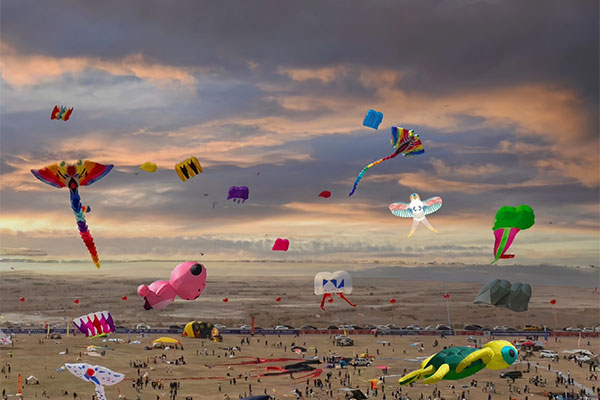Chinese Intangible Cultural Heritage - Weifang Kites
Introduction
Weifang kites are traditional folk handicrafts unique to Weifang City, Shandong Province, China, renowned worldwide for their distinctive shapes, exquisite craftsmanship, and vibrant colors. More than just recreational objects, Weifang kites represent a comprehensive art form combining bamboo craftsmanship, painting, and folk traditions. Inscribed on China's National Intangible Cultural Heritage List in 2006, Weifang is acclaimed as the "Kite Capital of the World," with its kites celebrated for three key characteristics: stable flight, elegant forms, and refined paintings.
Historical Development
Origins and Evolution
- Spring and Autumn Period: Legends of Lu Ban crafting wooden kites
- Tang-Song Dynasties: Military and communication applications
- Ming-Qing Dynasties: Development of distinctive Weifang style
- Since 1984: Annual Weifang International Kite Festival
Key Development Stages
- Ming Dynasty: Emergence of professional kite workshops
- Qing Dynasty: Formation of Yangjiabu kite school
- Republican Era: Important export commodity
- Contemporary: Innovations like electric and illuminated kites
Regional Characteristics
Major Schools
| School | Representative Figure | Artistic Features | Representative Works |
|---|---|---|---|
| Yangjiabu | Yang Tongke | Rustic charm, vibrant colors | Centipede with dragon head |
| Urban School | Tang Yanshou | Scholarly elegance, fine paintings | Butterflies, swallows |
| Modern Innovation | - | Technological integration, novel designs | 3D kites |
Materials and Techniques
- Frame: Bamboo aged over 3 years
- Covering: Premium silk or paper
- Painting: Traditional gongbi heavy-color style
- Flight: "Three-line positioning" method
Cultural Significance
- Folk Traditions: Qingming Festival kite-flying customs
- Auspicious Symbolism: Patterns conveying blessings
- Artisan Spirit: Pursuit of perfection in craftsmanship
- Innovation: Continuous integration of contemporary elements
Production Techniques
Core Skills
- Framing: Emphasizes symmetrical balance
- Covering: Requires wrinkle-free surfaces
- Painting: Traditional gongbi techniques
- Flight: Aerodynamic considerations
Special Techniques
- "Moving eye" mechanism
- Dynamic kite mechanisms
- Three-dimensional shaping
- Miniature kite crafting
Preservation Efforts
- Successor Training: Establishment of master workshops
- Technique Documentation: Compilation of Weifang Kite Craft Encyclopedia
- Innovative Development: Eco-friendly material research
- Industry Support: Kite industrial park construction
- Cultural Promotion: International kite competitions
Modern Development
- Annual production exceeds 100 million units
- Exported to over 50 countries and regions
- Complete industrial chain (production, sales, tourism)
- Kite-themed cultural creative products
- World Kite Museum establishment
As an outstanding representative of Chinese traditional folk art, Weifang kites not only carry profound historical culture but also continue to innovate globally, serving as beautiful ambassadors for cultural exchange between China and the world. Today, Weifang kites are writing new chapters in Chinese traditional craftsmanship with their unique artistic charm and innovative vitality.







